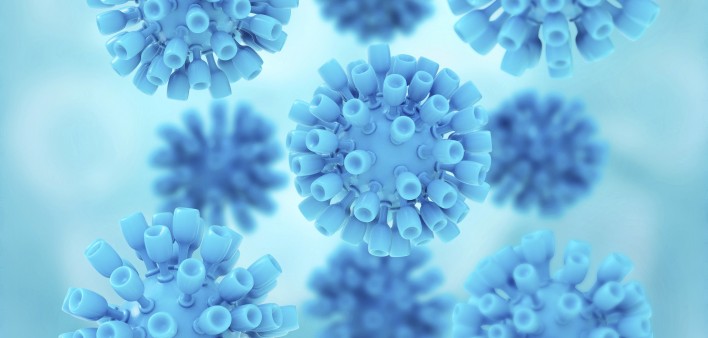While there are no guarantees in life, once someone has been pronounced cured of hepatitis C virus (HCV), the declaration that the virus is gone for good is quite near certain. Hopefully someone who has made it to this point can feel secure in the knowledge that they have indeed started a new, healthier chapter.
However, there are two reasons why a cure might not be permanent: relapse or reinfection.
A relapse, or return of the same virus, occurs when someone develops a detectable viral load following the end of treatment. After someone is considered cured, a resurgence of the virus is very rare, occurring in less than 1 percent of cases, even with the old interferon-based treatments.
If someone is still engaging in risky behaviors, they may wind up contracting the virus again. The most likely way of becoming reinfected is through sharing injection drug equipment. Men who have sex with men (MSM) may also contract the virus through condomless intercourse, particularly if they are HIV positive. (Sexual transmission of HCV among heterosexuals is rare.)
The technical term for a hep C cure is a sustained virologic response (SVR). This means that, after the end of treatment, an individual maintains an undetectable hep C viral load. While the standard used to be that 24 weeks needed to pass after treatment before someone was officially pronounced cured (known as an SVR24), these days researchers have concluded that just 12 weeks are acceptable (SVR12).
The reason clinicians call a cure an SVR is because, back when there were none of the powerful direct-acting antivirals (DAA) to treat the virus, just interferon and ribavirin, cure rates with were low and relapse rates high. Considering the heightened risk of a disappointment after the end of treatment, the scientific community categorized the time after successful therapy as a sustained period of an undetectable viral load, to note the relative uncertainty of the virus’ clearance. These days the term SVR hangs on as something of a relic of that era.
So how does a cure actually work? Unlike HIV, HCV does not weave its way into the genetic material of the cells it infects. Hep C occupies the cell’s cytoplasm rather than its nucleus, making it more accessible to antiviral therapies than HIV. Also, while HIV hides out in unreplicating cells, sometimes for years, leaving the virus safe from the assault of antiretroviral treatment, HCV must replicate in cells. DAAs attack hep C by interfering with various points in its lifecycle within a cell, halting replication and contributing to its ultimate demise. It is believed that the immune system itself is responsible for clearing away the last of the virus.
As notes Barry Bernstein, MD, vice president of infectious disease development at AbbVie, the Phase II AVIATOR study of the company’s Viekira Pak (ombitasvir/paritaprevir/ritonavir; dasabuvir) shows that 99 percent of those who achieved an SVR12 went on to have an SVR48.
“That suggests a very high correlation between the two [results], and a durability of response” to therapy, Bernstein says.
Other studies comparing an SVR12 with a later SVR benchmark have found similarly precise correlations. In Gilead Sciences’ Phase III trials of Sovaldi (sofosbuvir) and Harvoni (ledipasvir/sofosbuvir), approximately 99.7 percent of those who made it to SVR12 went on to achieve an SVR24.
One tricky thing about the emergence of detectable virus post-SVR12 is the difficulty of determining if it is reinfection or a relapse. In clinical trials of hep C treatments, researchers keep samples of participants’ viruses; this allows them to run genetic tests to deduce if any virus appearing in the body after treatment is the same virus as before or a new one. Unfortunately, these complex tests are not generally available for those treated in everyday clinical settings, and it is unlikely that a sample of the initial virus will be on hand for such testing.
The only practical way to tell for sure if someone has been reinfected is if tests show they have a new genotype, or genetic variant, of the virus. (Genotype testing is standard for all people with hep C, and is not the same thing as the complex genetic testing that can determine if two virus samples derive from the same person or two different people.) However, about 70 percent of Americans living with hep C have genotype 1; if they had this genotype to begin with, it is unlikely that they will wind up contracting a different one after being cured.
If relapse does occur, it tends to do so within the first two to four weeks after the end of treatment, but this is still uncommon with current therapies. An SVR4 is considered an excellent sign that someone will maintain an undetectable viral load an additional eight weeks and be pronounced cured. In a study comparing SVR4 and SVR12 rates among those treated with Sovaldi, researchers found a 98 percent correlation between the two milestones.
If someone is still concerned about the permanence of their cure, they can always take periodic tests to ensure they are free of the virus, perhaps as a part of their annual medical checkup.

Thinkstock
How Sure Is a Hep C Cure?
Once you’ve officially rid yourself of hepatitis C, how certain can you be that the virus is gone for good?






1 Comment
1 Comment